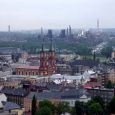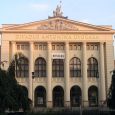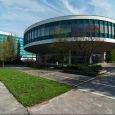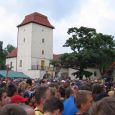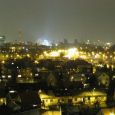Ostrava
Advertisement
By Air
Ostrava has an international airport called Ostrava Leos Janacek Airport with regular services to Prague (Czech Airlines, 4 times daily)and Vienna (Central Connect Airlines, 2/3 flights on weekdays).Hourly buses from the airport to Ostrava,a 35-minute ride,depart between 7:15AM and 10:15PM, tickets can be bought from drivers.
By Train
Ostrava lies on the main rail route connecting Vienna and Warsaw.Ostrava,as a third largest city,has direct train connection with the capital city Prague.Some EuroCity trains go also to Zilina and Kosice.
By Bus
Public transport infrastructure consists of 17 tram (streetcar),9 trolleybus,59 day bus lines.Service is provided mainly by Dopravni Podnik Ostrava a.s. (Ostrava City Transportation Company).
Landek park
Located on the former Anselm Mine (one of the first to be established at the end of the 18th century in what is today the Petřkovice District of Ostrava), the Mining Museum was opened in the early 1990’s.It is the largest mining museum in the Czech Republic.The coal seams of the former Anselm Mine surface at the Landek National Nature Reserve, a world famous site in terms of geology,archaeology, history, natural sciences and mining.Man was using black coal here more that 25 000 years ago! A unique exhibition of the Mining Museum highlights the evolution of coal mining in the Ostrava-Karvina region, as well as mining technology,and rescue services. In fact, it is the largest exhibition of its kind in the world. The site includes sports and recreation facilities, bowling, cycling trails and a children’s corner. Kc 70 (short circuit) or Kc 150 (long circuit),double price for an English guide, book him in advance.
Lower Vitkovice Area
This is an industrial area origination from the 1st half of the 19th century.In 2002, in view of its exceptional character, the entire ground was declared a site of National Cultural Heritage.There was the complete technological flow: the mining of coal, a coke plant, and iron and steel production, all of which was unique to the Czech Republic.This historic landmark was listed as the European Cultural Heritage in 2008.The Vítkovice complex Dolni oblast is set to undergo extensive reconstruction.The giant gas container for blast furnace gas (around 70 m wide and 33 m high) will be modified into a concert hall for 1,500 visitors, a gallery, cafe, etc.,based on design by leading Czech architect, Josef Pleskot. Blast Furnace no 1 will become the start of a tour route, and the sixth energy central office will become an industrial museum (project authored by Václav and Helena Zemankovi.
Antonin Dvorak Theatre
Neo-baroque building of the theatre was designed by architect Alexander Graf, realisation was made by Ostrava company Noe & Storch. Antonin Dvorak Theatre was the first building in Czechoslovakia using reinforced concrete beams.Antonin Dvorak Theatre in Ostrava is one of the opera houses in the Czech Republic. It is a part of the National Moravian Silesian Theatre, founded in 1918.The interior was designed by sculptors of the Johann Bock & son company. The sculptures decorating the facade made Eduard Smetana and Leopold Kosiga. Drama and Music, two reliefs in the main foyer of the theatre, were donated by academic sculptor Helena Scholzova alias Helen Zelezny-Scholz.
Silesian Ostrava Castle
Is a castle in Ostrava, in the northeastern Czech Republic.It was originally built in the 1280s near the confluence of the Lučina and Ostravice rivers.The castle was built for military purposes due to its proximity to the Polish border.In 1534, the gothic castle was rebuilt into a renaissance chateau. It burned down in 1872 but was rebuilt.It was restored recently after many years of dilapidation, caused by coal mining under the castle.Today, the castle is one of the most important tourist attraction of the city.
Information not available


